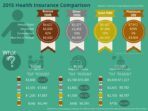Insurance Company Balance Sheet Format – Insurance is a financial product by insurance companies that protect people (and the company) from unexpected losses or damage. Insurance companies can provide this product, and distribute individual risks between a large group of people, so if there is something bad for one person, such as a dangerous car accident, the insurance company helps to cover the costs of repairs or exchange. In exchange for the payment of the insurance premium, people acquire more financial security, knowing that they will not have to face a large financial burden on their own.
The main financial statements of insurance companies are the same as most other companies: (1) the balance, (2) calculating profit and loss and (3) Cash flow account. Each financial statement provides important financial information for both internal and external stakeholders in the insurance company.
Insurance Company Balance Sheet Format

Note that the balance is the first financial statement on the above list. This differs from this, as usual, we mention the financial statements. This is due to the fact that as a financial institution, the activities and income of insurance companies are paid firmly from their public budgets, more than regular companies that produce goods or physical services.
Personal Finance Statement
This does not mean that the balance is the only financial issue that concerns. Like all other companies, financial analysts use all the three basic financial statements to analyze the results of insurance companies and the health of insurance companies.
Understanding the financial health of insurance companies is necessary, not only for companies themselves, but also for investors, organizational bodies and the wider economy. It is also important for customers insurance companies who want to make sure that the company can respect its duties when accidents occur.
The “Float” of the insurance company is a very important topic that must be understood and is of the main importance of understanding the business model of the insurance company.
Float refers to the contributions that customers pay for insurance companies. This money is not paid immediately as insurance claims. Instead, insurance companies use a float to invest in securities to generate investment income. Unlike banks, which sometimes pay interest to deposits, insurance companies usually do not pay benefit on customer contributions. For this reason, insurance premiums effectively form a cheap or even free financing for the insurance company.
Insurance Company Final Accounts
Insurance collects a set of insurance premiums paid by insurance companies, creating a swimmer. A float is then invested by insurance companies to generate additional income, usually through bonds, stocks and other assets.
When document holders submit insurance claims related to events covered by events such as property accidents or damage, the insurance company uses floating money to pay these claims. By spreading risks in a large group and investment contributions, insurance companies guarantee that they have financial resources to fulfill their obligations to document holders, while obtaining a return on investment to maintain business and develop activities.
Since it is very difficult to predict demands, insurance companies must keep the appropriate reserves to cover claims. This is a practical requirement and regulatory requirements. These reserves have a special capital or shares, capital.

Capital as a buffer against losses is greater than expected. The appropriate amount of capital insulation is determined by the applicable organizational authorities as well as the internal modeling of the insurance company.
Adjustments In Final Accounts
As previously discussed, it is difficult to predict demands. Even after the accident, it may take some time before notifying the insurance company. In addition, the insurance company usually wants to examine all claims to ensure that they are suitable, covered, not fraudulent. Because of these factors, it is difficult to estimate the expenses related to demands. However, the insurance company must do this to follow the principle of identical accounting.
For this reason, insurance companies must estimate possible claims and note that it is the cost of calculating profit and loss. This estimate is known as infection but not reported (IBNR). Since it is an estimate, it will be eventually corrected up or down based on the actual claims that were incurred.
When the claims were submitted, they become part of the costs of the claims that have suffered from them. This connection with IBNR reveals the total cost of demands in a specific accounting period.
The insurance industry operates similar to the aviation industry, because we pay the service provider that will be provided in the future. The general principle of accounting is formed in the appointment of contributions during the policy period, and not immediately after the sale of politics.
Opening Stock 90000 Sales 300000 Cash 60000
As was previously discussed, insurance companies receive contributions a long time before payment (float). Meanwhile, insurance companies that float in various investments will invest to get some income or profits. Although specified accounting standards may vary according to investment, many investments are measured by fair value. This means that if these investments increase, the insurance company offers unrealized profit in the profit and loss account. Of course, if investments decrease, this will lead to an unrealized loss.
It should be noted that not all investments affect the expense of profit and loss. Instead, some unreasonable profits or losses are identified in another comprehensive income.
Insurance companies should be a solvent so that they are financially able to implement all claims. As part of this, insurance companies must maintain appropriate capital reserves and invest in general in fixed income investments.

Investments for permanent income, especially high -quality bonds, such as government bonds and companies, provide stable and predictable returns in general. The expected cash flows from the bonds help ensure the availability of money when paying the claims.
Cash Flow Statement: What It Is And How To Read One
To develop activities and ensure that they are able to pay claims, insurance companies should be profitable. The profits can come in the form of insurance insurance, as well as make profitable investments. Either way, profitability increases the capital, making sure that the insurance company can respect its financial obligations.
Insurance deals with risks, so the appropriate risk management is crucial for insurance companies. Risk management is important to ensure sheet and financial stability, an appropriate understanding of the risks of various claims (and evaluating these threats properly), compliance with regulations and maintaining confidence and customer reputation, among many other aspects.
The insurance company can be analyzed on the basis of many indicators that we will use during the company’s regular and operational analysis. For example, the return on the capital can be calculated in the same way as with any other company. However, there are also many financial indicators for insurance. Some of the most common include:
Loss: The loss index is calculated by dividing the losses that suffer from acquired contributions. The higher this indicator, the lower profitability of profitability and vice versa.
Owners Equity , Net Worth, And Balance Sheet Book Value Explained
Expatible Index: The spending index is calculated by dividing the costs related to purchase, insurance and contributions to service through acquired contributions. Like the loss rate, the lower this percentage, the better.
In connection: This indicator is calculated by collecting all expenses directly related to the generation of insurance premiums and sharing these expenses according to the acquired premiums that were created in a certain period. Instead, the total laboratory can be calculated by adding losses to the cost coefficient.
In other words, the shared laboratory formula is (Counsions + Expections + claims) / contributions. The higher this indicator, the less profitable the company when insurance (and vice versa). Not all investment income (or costs) are included in these accounts, so even a total of 100 % or more does not necessarily mean that the insurance company loses money.

Insurance factor: The insurance factor is simply minus the connected indicator. If the common percentage is 95 %, the insurance factor is 5 % (1-95 %). In other words, after all insurance expenses, demands and commissions, the insurance company has 5 % of acquired contributions.
Insurance Industry Balance Sheet Excel Template And Google Sheets File For Free Download
Thank you for reading CFI on the financial statements of the insurance company. To continue your career and skills, the following CFI resources will be useful:
Mastering Excel shortcuts on the PC and Mac menu for Excel Excel
CFI financial modeling instructions for financial modeling are accurate and complete resources including designing models, building materials, shared advice, tricks and …
SQL data, what are the types of SQL data? The structured language (SQL) includes several different types of data that allow it to store different types of information …
Sample Accounting Excel
SQL Information Language (SQL)? Language of query (known as SQL) is the programming language used to interact with the database ….
The update of the paid membership allows access to our wide range of additions and games designed to supply performance-as well as a full CFI cat and approved certification programs.
Get unlimited access to more than 250 full CFI performance templates, certified certificates programs, hundreds of resources, reviews, expert support, job opportunities with real financial tools, search tools and more.







